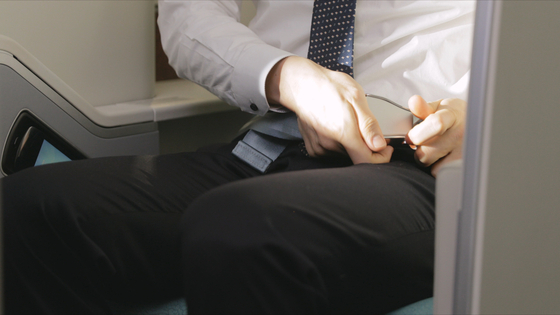Korean Air is ending its in-flight services 40 minutes before landing, in an apparent response to the Ministry of Land, Infrastructure and Transport’s vow to strengthen aviation safety standards following a series of domestic and international safety incidents.
Under the protocol revision effective from Monday, in-flight services for all medium- to long-haul routes will end 40 minutes before landing, Korean Air said the same day. This is up to 20 minutes earlier than prior to the revision, when the carrier had provided services up until preparations for landing started, even as the aircraft started to descend.
In-flight services include catering for food and beverages, personalized attention and the provision of amenities by flight attendants.
One passenger died and 85 more were injured on a plane operated by Singapore Airlines after the carrier hit severe turbulence as it flew above Myanmar in May. While most turbulence can be successfully predicted before the plane takes off, clear air turbulence — a type difficult to detect that was the cause of the Singapore flight incident — is notably becoming more common due to climate change.
Singapore Airlines changed its in-flight policy following the incident to stop serving hot drinks and meals when the seatbelt sign is on.
Domestic airline Asiana Air changed its protocol for mid- to long-haul flights in May for cabin crew members to start preparations for landing and safety inspections when the plane begins descending, regardless of altitude, unlike its previous policy that started preparations at 20,000 feet from the ground.
Korean Air had already applied its earlier end to in-flight services for some flights to Southeast Asia, where turbulence is frequent, a company spokesperson said. It has been expanded to medium- to long-haul routes on Monday. It will not be applied to domestic or short-haul trips, such as to Japan.
The revised protocol applies to all cabin classes from economy to business and first.
Korean Air also stressed the importance of passengers following flight attendants’ instructions in its Monday news release.
The signal to fasten seat belts will come on when the plane goes through areas where turbulence is predicted. Passengers will be required to be seated with their belts on and are discouraged from using the lavatory.
Korean Air will not be enforcing seatbelt usage for passengers when the seatbelt sign is not on, but highly recommended that all travelers wear them at all times for their own safety.
BY KIM JU-YEON [kim.juyeon2@joongang.co.kr]





